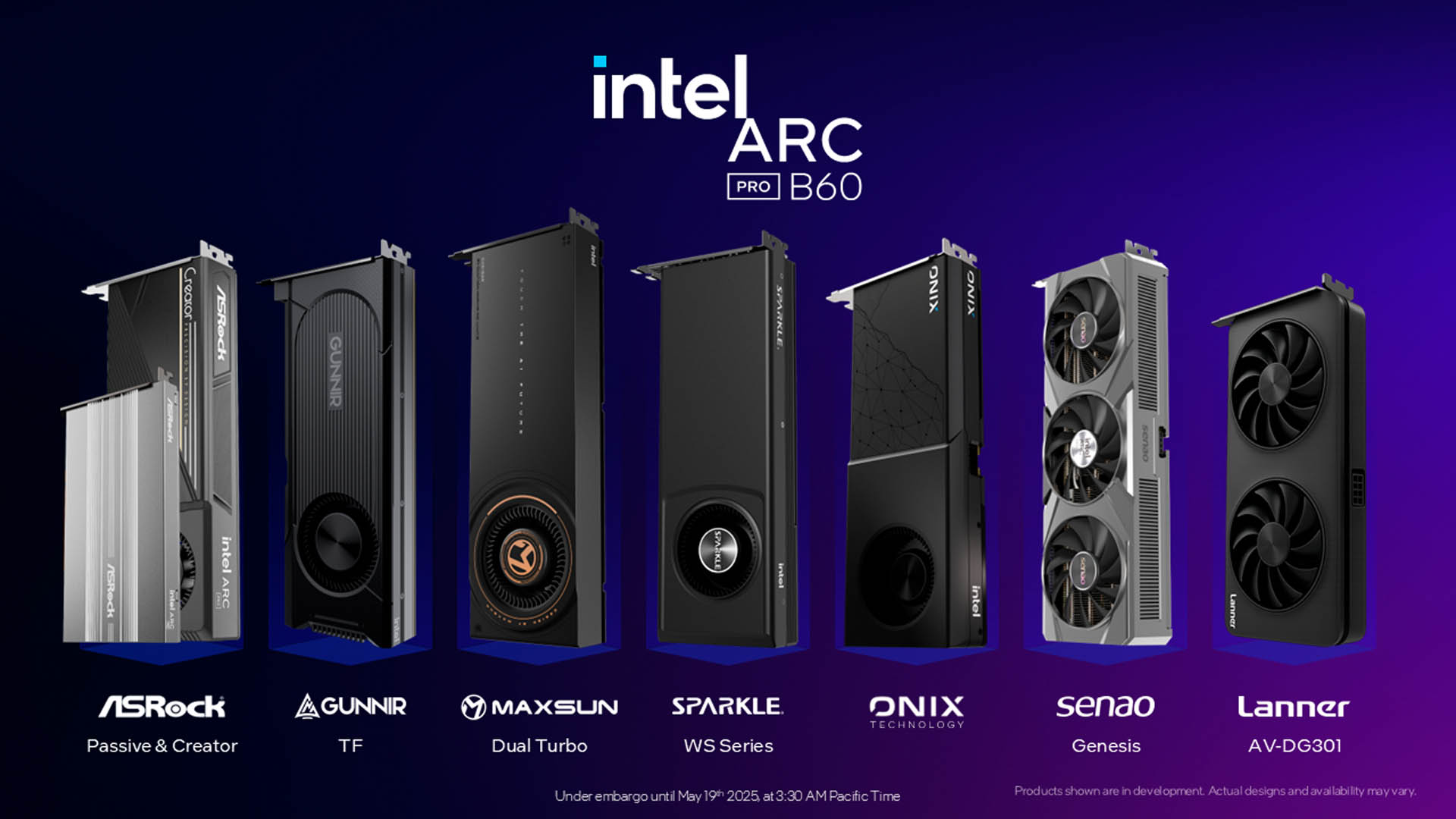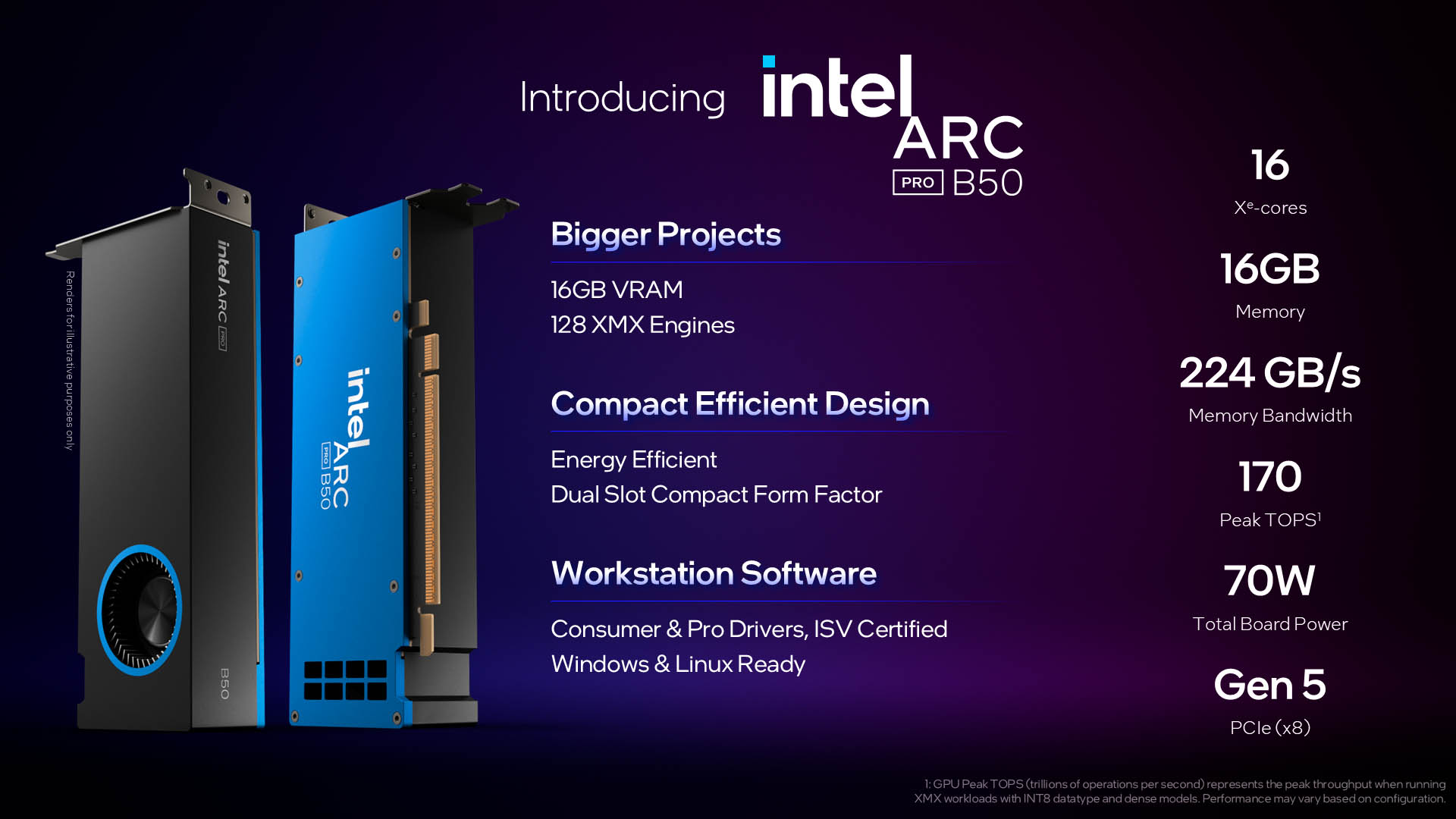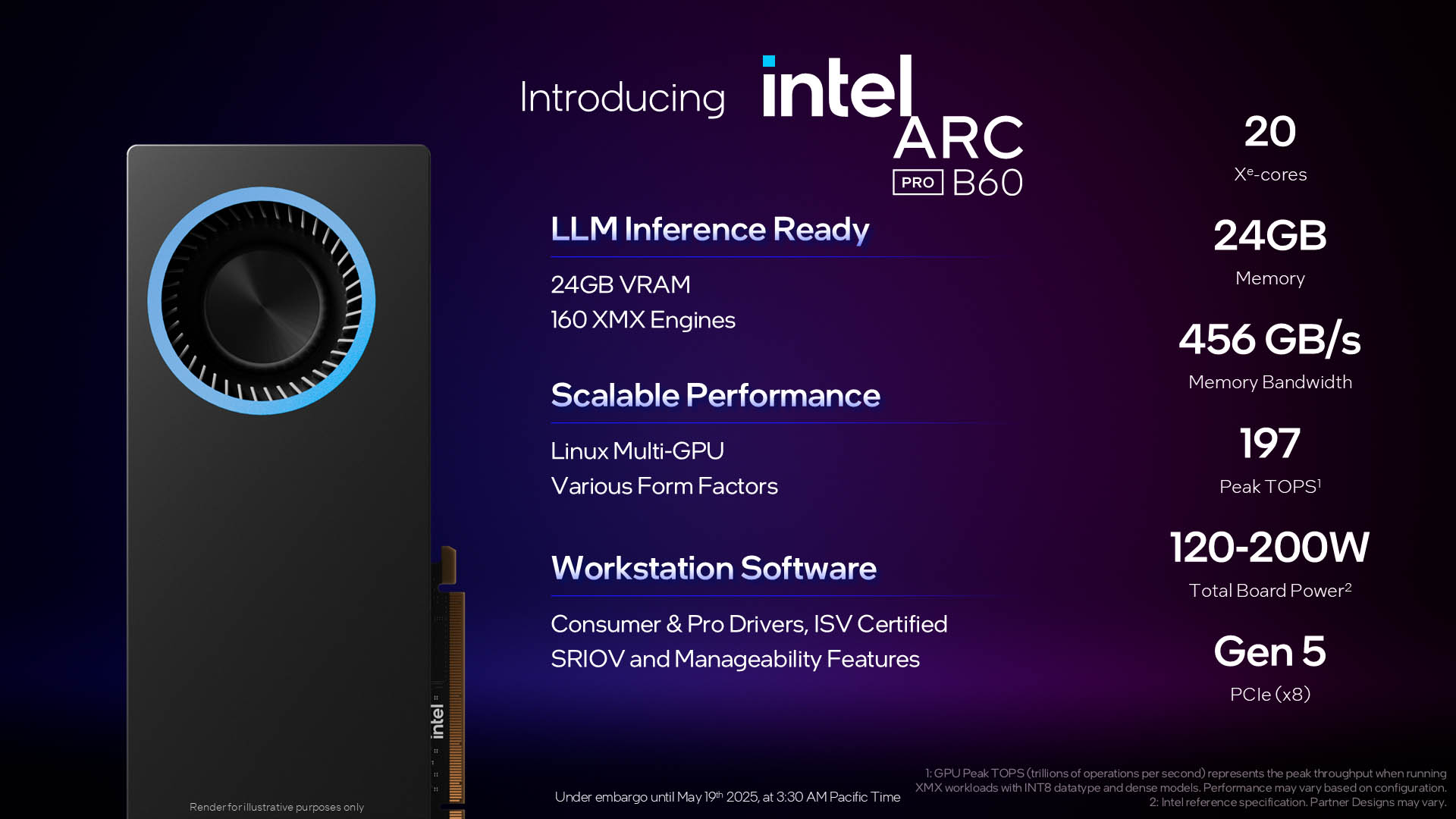Intel targets viz and AI workloads with large amounts of GPU memory and new route to market
Intel has launched the Arc Pro B50 (16 GB) and Arc Pro B60 (24 GB), two new professional desktop GPUs built on its Xe2 ‘Battlemage’ architecture, featuring Intel Xe Matrix Extensions (XMX) AI cores and advanced ray tracing units.
These new PCIe Gen 5 GPUs offer a big performance uplift and a significant increase in memory compared to the previous-generation PCIe Gen 4 ‘Alchemist’-based Arc Pro A50 (6 GB) and A60 (12 GB).
Both GPUs offer significantly more memory than the equivalent Nvidia RTX cards at the same price point. At $299 for a 16 GB pro GPU and $500 for a 24 GB model, Intel is breaking new ground.
On paper, this makes the Arc Pro B50 and Arc Pro B60 much better equipped to handle more demanding workflows, including larger viz scenes in applications like D5 Render and Twinmotion, and AI tools like Stable Diffusion.
The Intel Arc Pro B50 (16 GB) is a low-profile, dual-slot graphics card with a total board power of 70W. This makes it compatible with small form factor (SFF) and micro workstations such as the HP Z2 Mini and Lenovo ThinkStation P3 Ultra SFF, although no major workstation OEMs have yet confirmed support.
Priced at $299 MSRP, the Arc Pro B50 competes directly with the Nvidia RTX A1000 (8 GB) — but, as Intel highlights, it offers double the memory.
The Intel Arc Pro B60 (24 GB) is a full-sized board with 120W – 200W of total board power. This broad power range is because the GPU will also be available from seven board partners, in all shapes and sizes. For example, ASRock has a passively cooled board while Maxsun has one with two GPUs on the PCB. Intel does not plan to set an MSRP for the Intel Arc Pro B60 but estimates the card value to be around $500.
For the Arc Pro B60, Intel is going hard on its AI messaging, pitching it as an ‘inference workstation GPU’ that is ‘LLM inference ready’. According to an Intel spokesperson, Inference workstations enable small to medium businesses to run and codify their know how locally and use their data locally so that it doesn’t get shared to third party services.
According to Intel having 24 GB of memory can give the Arc Pro B60 a significant performance advantage in AI workflows over GPUs with 16 GB of memory such as the Nvidia RTX 2000 Ada and Nvidia RTX 5060Ti. “[It] runs significantly faster as soon as the model sizes start getting close to 16 GB,” said an Intel spokesperson.
Intel also announced Project Battlematrix, an internal code name for new inference workstation platform that provides up to eight Intel Arc Pro GPUs in a system, allowing up to 192 GB of VRAM. According to Intel, this allows it to run models that are 70B+ parameters and above.
Intel has also shared its future roadmap for Intel Arc Pro. Later this year it will launch another Arc Pro GPU variant and to improve support for virtualisation with features such as SRIOV.

What AEC Magazine thinks
When Intel first launched Arc Pro at the tail end of 2022, it focused heavily on pricing as a differentiator, but not necessarily on features. Both the Arc Pro A40 and A50 came with 6 GB of memory, which limited them mostly to CAD and entry-level visualisation.
With the Arc Pro B50 and B60 this looks set to change. Both GPUs offer significantly more memory than the equivalent Nvidia RTX cards at the same price point. At $299 for a 16 GB pro GPU and $500 for a 24 GB model, Intel is breaking new ground.
This could give it an advantage in memory-hungry workflows, such as GPU rendering, where running out of memory can lead to a significant drop in performance or even cause the software to crash. However, Intel also faces increased competition from AMD and its Ryzen AI Max Pro processor, which has an integrated GPU with fast and direct access to up to 96 GB of memory.
Of course, there’s a lot more to pro graphics than memory. Intel will also need solid performance and stable pro drivers. When we first looked at Arc Pro in Dec 2022, it was clear Intel still had some work to do on the software front, but with two and a half years of development and 50 ISV certifications under its belt, we expect much has changed.
Furthermore, Intel must still carve out a clear path into the professional GPU market. With the first-generation Arc Pro cards, there was limited take-up by the major workstation OEMs, and with HP, Lenovo, and Dell in the process of rolling out new Intel Core Ultra-based workstations, it may be a little while before we know whether Intel has secured any significant design wins this time around.
Interestingly, Intel is also exploring alternative routes to market. The Arc Pro B60 will be available through seven board partners — a first for professional graphics — opening up an entirely new distribution model for Intel in this space.









